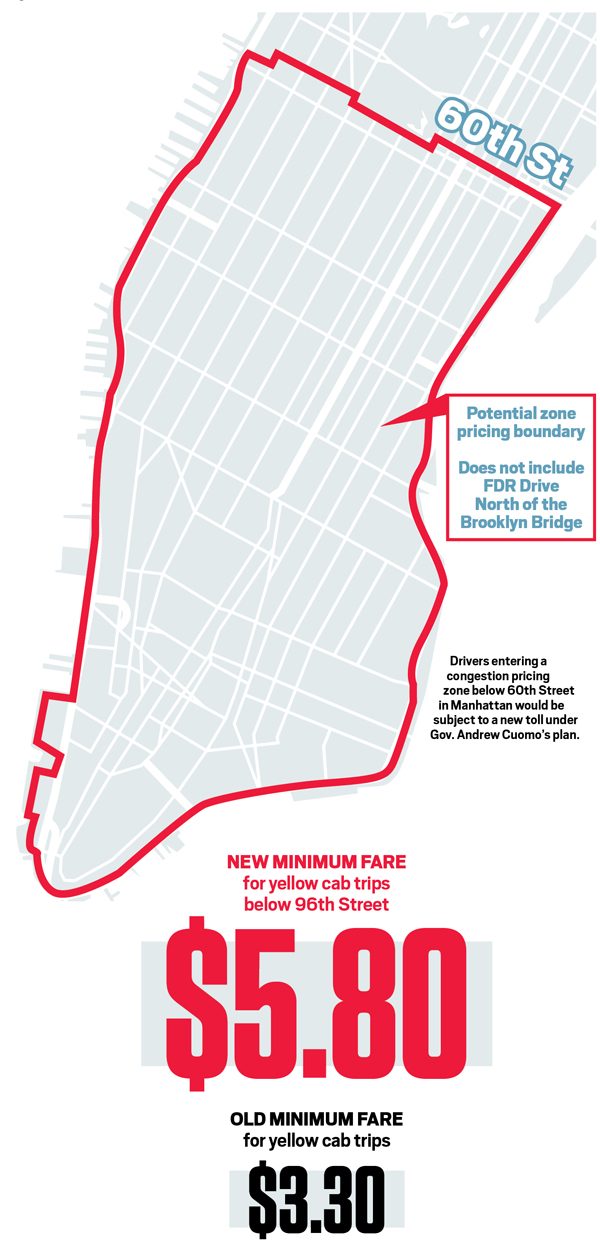Congestion pricing, explained
If you've hailed a yellow cab in the last few weeks, you've surely noticed the new $2.50 surcharge on all trips that begin, end or pass through Manhattan below 96th Street.
The new surcharges, which took effect Feb. 2 and include additional fees of $2.75 for green cabs, black cars, Ubers and other app-based services and 75 cents for pooled rides, are expected to generate $400 million in annual revenue for the beleaguered Metropolitan Transportation Authority.
Just as passengers are growing acclimated to the new cost of hailing a ride, more fees for car-borne New Yorkers could be in the pipeline.

Graphic: Caitlin Ryther
Gov. Andrew Cuomo is calling on the state legislature to enact congestion pricing—an effort to raise funds for the MTA and ease traffic by charging drivers for the privilege of using Manhattan streets.
How would congestion pricing work?The governor's proposal would levy a toll on drivers entering a congestion zone encompassing all of Manhattan south of 60th Street (with the possible exception of the FDR Drive). Fees would be collected by camera-based system, which could be adjusted to enforce variable toll rates depending on the day and time.
Why is it necessary?Congestion pricing revenue would be dedicated exclusively to capital improvements for the MTA. The governor says his plan would raise $15 billion for the MTA, which has estimated capital needs of $40 billion to $80 billion in its next five-year plan. The only viable alternative for raising the necessary funds, Cuomo says, is to hike fares for straphangers.
“The real choice is between congestion pricing or a 30 percent MTA toll and fare increase,” Cuomo said at a Feb. 7 press conference. “Those are the only real options.”
In addition to funding the MTA, advocates say the plan would ease congestion, reduce pollution and result in improved bus service.
How much would it cost?Cuomo has not said what the fee should be for entering the congestion zone, but last year a commission convened by the governor recommended a charge of $11.52 for passenger vehicles on weekdays between 6 a.m. and 8 p.m.
What is the mayor's stance?Mayor Bill de Blasio offered lukewarm support for congestion pricing in Albany budget testimony Feb. 11, reiterating his long-held preference to create a new funding stream for the MTA through a tax on millionaires. He argues that those with hardships, such as the poor and elderly, should be exempted from congestion fees. Congestion pricing advocates counter that such carve-outs could undermine the plan. The mayor also said that the city should be involved in the plan's implementation.
“If congestion pricing is an option, I've been clear that I believe strongly it should consider and include hardship exemptions, revenues should be putting a lockbox for subways and buses, and there should be clear, dedicated investment in transit deserts,” de Blasio said.